Eat More of These 10 Foods to Lose Weight Fast
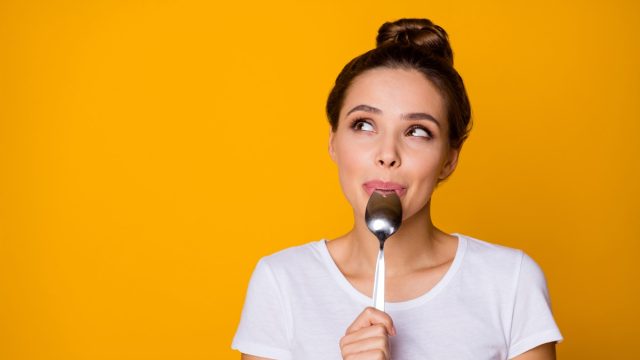
Do you want to lose weight without having to eat less food? Dr. Marc Morris, PhD, is an online nutrition and strength coach who regularly shares videos on how to get in shape. In one of his viral YouTube videos, he discusses volume eating and the concept of eating more food to lose weight. "What I'm about to say may seem impossible, but did you know you can actually eat more food and still lose weight?" he says in the clip.
Volume Eating Allows You to Eat Larger Portions and Stay Fuller Longer
"Today we're going to talk about a dieting strategy that allows you to do just that so you can eat larger portions, feel fuller for longer, and maybe even make dieting enjoyable. This way of eating is called volume eating and may even be the secret to you or your client's weight loss success," he says in the video.
It Will Help You Lose Weight
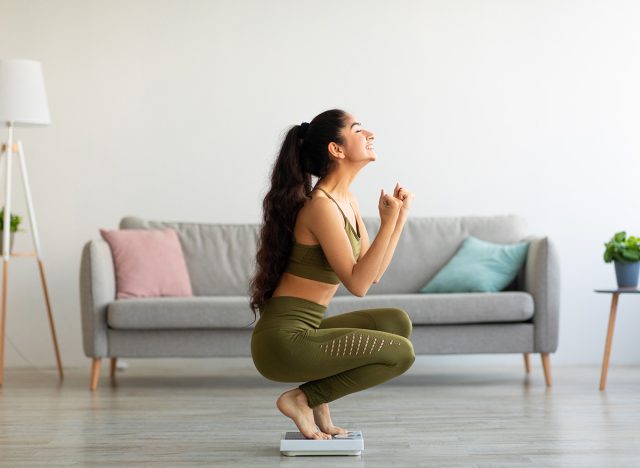
"Today, I'm going to show you exactly how to start volume eating so you can lose more weight, and it'll even tell you exactly what foods to add to your grocery list. But first, let's talk about what volume eating is," he says.
You Don't Have to Eat Less to Cut Calories
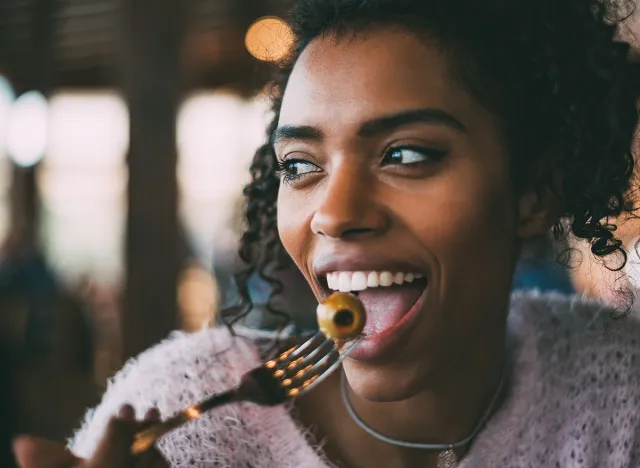
"When most people think about weight loss, they think that in order to cut their calories, they need to eat as little as possible. And while it is true that you need to be in a calorie deficit in order to burn fat and probably eat less overall calories than you're used to, that doesn't mean that you need to eat less food," he explains.
Successful Dieters Choose Foods That Are Lower in Calories, Higher in Protein
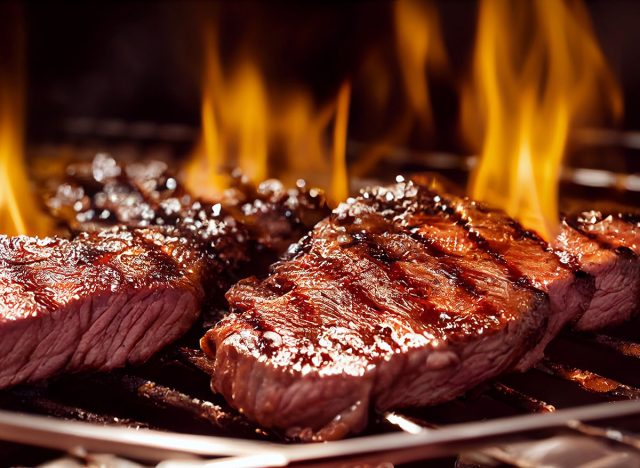
"You see, the people that lose weight successfully are not the ones that starve themselves day in and day out fighting hunger. Instead, they are choosing foods that are lower in calories and higher in protein, which allows them to eat more food while staying in a calorie deficit. This is called volume eating, where you can eat more food while still losing weight, but you have to pick the right kinds of foods," he says.
Here Is What You Should Look For
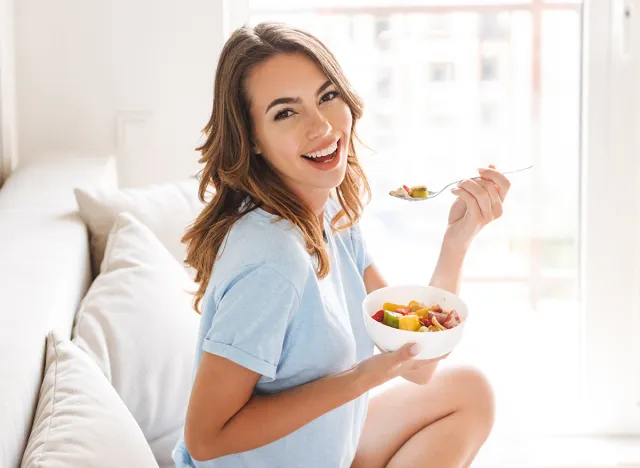
He goes on to explain "how to find the foods that are gonna work best as well as why volume eating works so well," he says. "The secret lies in the macronutrients, protein, carbohydrates, and fat that supply the calories that we eat. Both carbohydrates and fat supply four calories per gram and for fats, it's over double that because one gram of dietary fat has nearly nine calories."
Start with Foods Lower in Fat
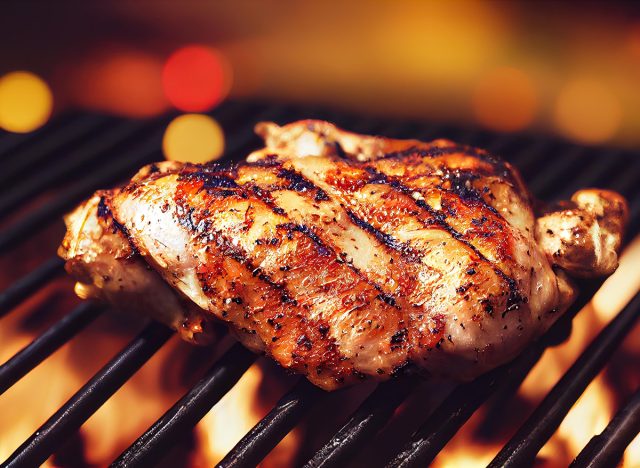
"Just by knowing this information, you're probably starting to guess that foods that are lower in fat are a good place to start because these foods that are higher in fat are going to supply more calories even if they're nutritious, which isn't a bad thing, it doesn't mean you should avoid them entirely, but you are going to need to be mindful of them. These foods are good from a nutrient standpoint because they do supply some protein as well as healthy fat," he says.
An Example: Two Tablespoons of Nut Butter Vs. Salad with Chicken Breast and Low-Calorie Dressing
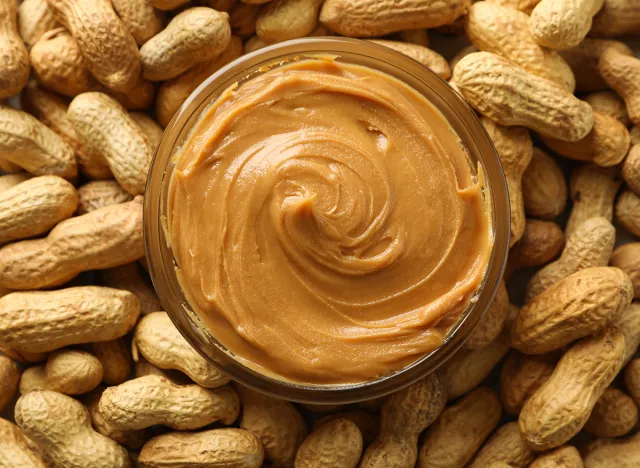
"Imagine this for the same 200 calories in those two tablespoons of nut butter. You can have a huge salad with low-calorie dressing, chicken breasts, and a bunch of vegetables for roughly the same amount of calories. And when you compare these two meals, it's easy to see that the salad meal is going to be much larger in size and more complete in the macronutrients, especially protein, which is going to be a fat loss, superfood, it's going to help you stay full, increase your muscle mass," he explains. "It is generally low in calories as well as many other nutrients being included in the vegetables and greens."
That Salad Will Keep You More Full and Satisfied
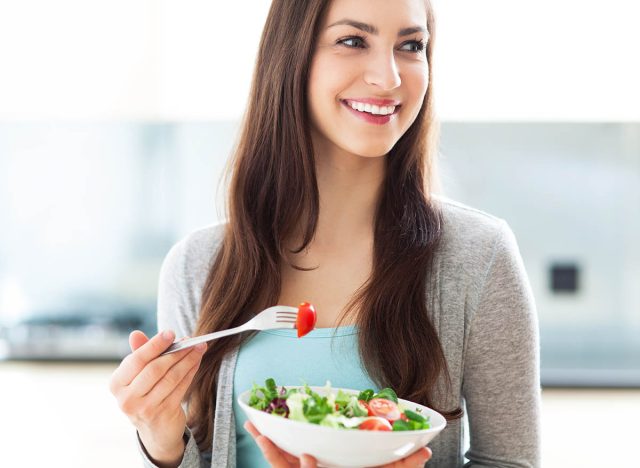
"You'll feel much more full and satisfied than you would if you were just eating the two tablespoons of peanut butter. And since you're eating a larger quantity of food, you're going to feel like you're having a full meal, which will help you lose weight without even feeling like you're on a diet," he says.
These Types of Examples Will Motivate You
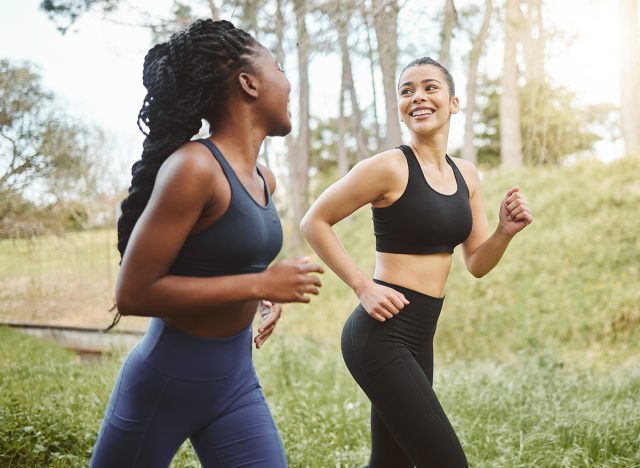
He recommends using examples like this to keep you going. "Once you see that you're able to get results and lose weight without starving yourself for the entire day, it's gonna motivate you all the more," he says.
RELATED: I Lost 135 Pounds by Eating More and Walking
Here Are His Top 10 Volume Eating Foods

Next, he reveals his top 10 volume-eating foods. "So now that you know how volume eating works, let's go over the top 10 foods that you can eat that are high in volume and still allow you to lose weight," he says.
1. Strawberries
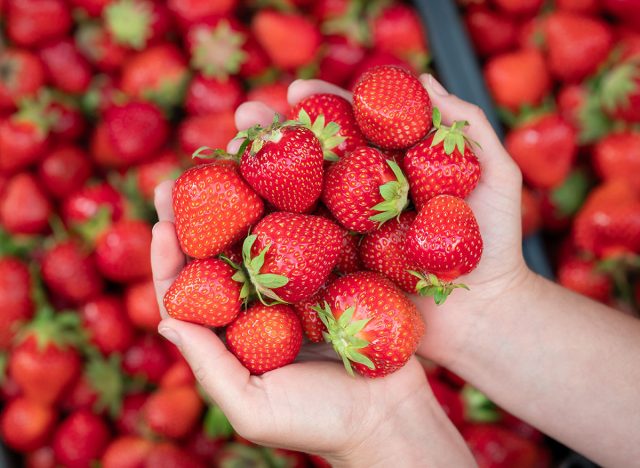
Number one, strawberries. "Strawberries are a great choice for fruit because they are very high in volume and very low in calories as well as high in other nutrients. A whole cup of strawberries is actually less than 50 calories, so they are a great way to add volume to your meals," he explains. "Strawberries are some of the least calorie-dense forms of berries, but in reality, you can't really go wrong with any of them. Eating them fresh and on their own is great, but you can also buy them frozen and add them to smoothies, and since they're popular and always in demand, you'll always be able to get them."
2. Spinach and Leafy Greens
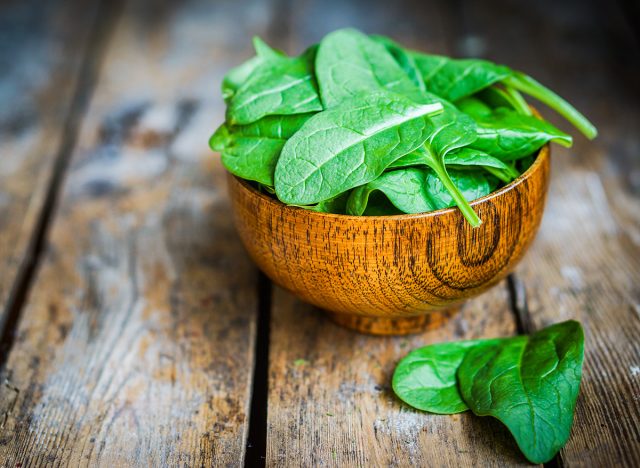
Number two, spinach and leafy greens. "Eating more of any leafy green vegetable is going to be a great way to increase the volume with very few calories. A hundred grams of spinach is only around 25 calories, so in reality, you could fill up an entire one-pound container of spinach by adding it to a massive salad, and the spinach would only account for around a hundred calories," he says. "Beyond spinach, there are many other greens you can eat, like lettuce and kale and even cabbage. So, with so much variety, it's quite easy to make it a staple in your fat-loss diet. Foods like spinach really take volume eating to the next level."
3. Cauliflower and Cauliflower Products
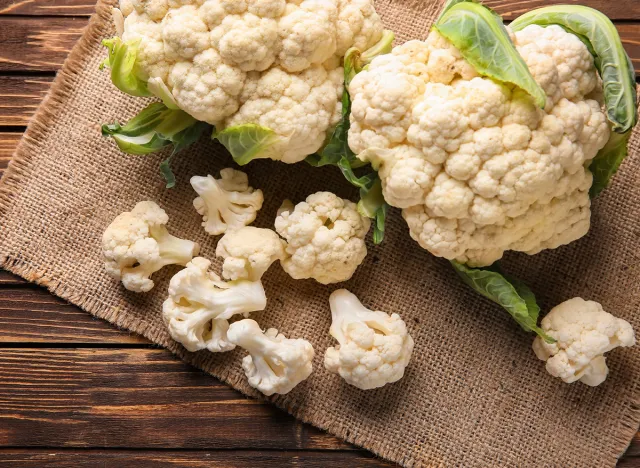
Number three is cauliflower. "One cup of cauliflower has less than 30 calories. Making it an easy way to add a lot of volume to your meals while snacking on cauliflower alone is okay. Let's be honest, it's not the first thing you're going to pick," he says. "Cauliflower has exploded over the last decade as an alternative to some of your favorite higher calorie foods like cauliflower, rice, gnocchi, and even pizza crust. These substitutions aren't exactly the same thing, but they still taste pretty good when seasoned correctly. And a lot of these you can buy frozen and prepared. For example, Trader Joe's has their spicy Mexican cauliflower rice that has only around 200 calories per bag, which is great as a side or in burritos, and their cauliflower fried rice is equally good."
4. Watermelon
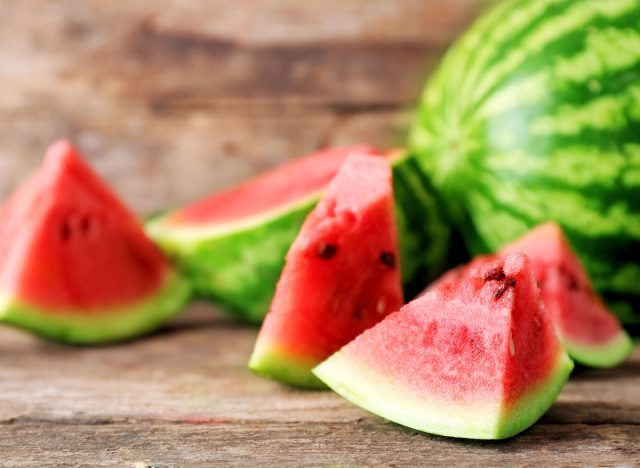
Number four is watermelon. "Even though most fruits and vegetables deserve a spot on this list, I'm only gonna talk about one more so we can talk about some of the other categories, but watermelon we must include because, as the name implies, it includes a lot of water, which increases its volume for not a lot of calories," he explains. "Watermelon is actually 92% water, so when you're eating it, you're eating mostly water and not a lot of calories and staying hydrated, which is another bonus for around a cup of watermelon. It's only going to be around 45 total calories."
5. Chicken Breast
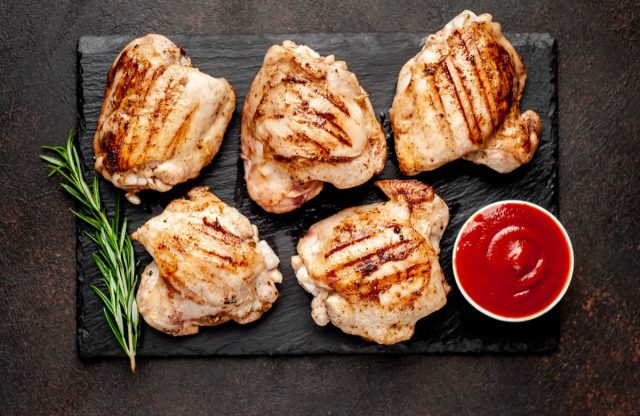
"So just by going off this list so far, you'll notice that it's really easy to increase the volume of your diet by just including more fruits and vegetables, but for a quality diet, you're going to need more than that. You're going to need more protein, which is why our next foods are going to be focused on that," he says, going onto number five, chicken breast. "One of the best protein sources around for volume eating is going to be chicken, more specifically chicken breast. Now, just like a lot of other foods, chicken can be made into a super high-calorie meal very quickly, so you want to make sure you're preparing it in a way that doesn't add a ton of calories. This might mean baking, grilling, or even air frying boneless skinless chicken breast instead of just eating deep-fried chicken wings," he continues. "Trust me, there is a big difference overall. Chicken breast is a very lean meat of around a hundred grams cooked in a serving. It's going to be around 120 to 130 calories, and that's because it's virtually all protein, very little fat, around three to four grams. And by eating more chicken, you're going to be eating more protein, which is a very important part of volume eating. Not only do we want to increase the physical mass, but we also want to increase the protein. That's what helps keep you full. And also eating less calories."
6. Greek Yogurt
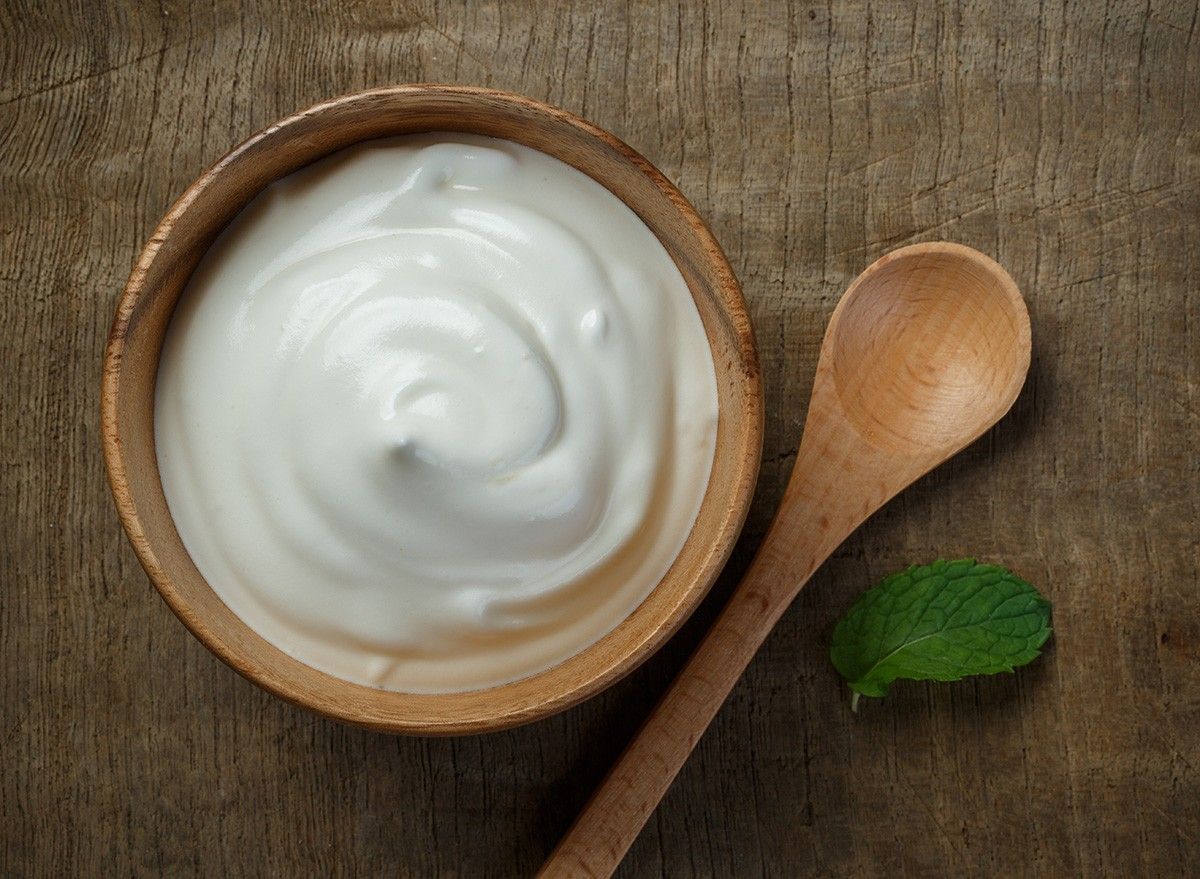
Number six is Greek yogurt. "The best way to eat Greek yogurt for the sake of weight loss is going to be the plain, unflavored stuff. This is going to cut out a lot of the extra calories and really just isolate the protein, but sweetened and flavored Greek yogurt is still going to be a good option, especially if you can't tolerate just the plain stuff. Just know that there's going to be some added calories for that. If you do go for the non-fat plain Greek yogurt, though, it's going to be around 90 to a hundred calories for every three-quarter cups serving, supplying around 18 grams of protein as well. Pair it with some fruit in a bowl or add it to a smoothie, and you're going to have a very filling, low-calorie meal," he says. "Plus, as far as preparation goes, it's going to be quick and easy because you don't need to cook anything. It's ready. You can also use Greek yogurt in place of sour cream and heavy cream in some recipes. It's very versatile."
7. Egg White
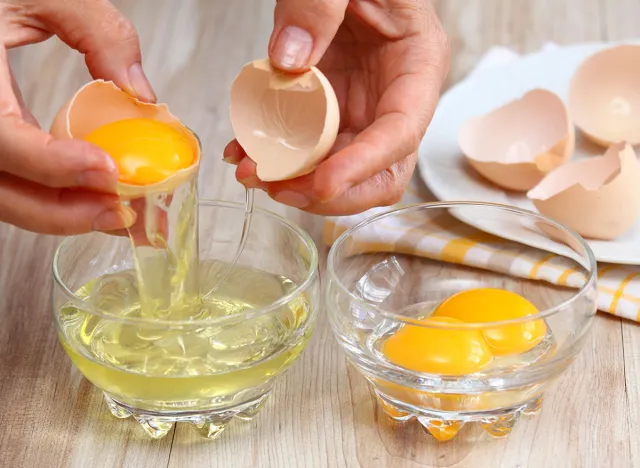
Number seven, egg whites. "Egg whites are a little twist to a very common breakfast food. The egg you see, the egg yolk is where most of the fat is stored, so when you remove that, you're eating virtually all protein and egg. White itself is going to have around four grams of protein and only 20 calories as opposed to a whole egg, which is going to have around 70 calories and an additional six grams of fat. One trick is to buy those pre-packaged liquid egg whites so you don't have to separate them out yourself and waste the egg yolk," she says. "Keep in mind the whole eggs do have a ton of nutrients, though, so I'm not saying to avoid those entirely, but when you balance out whole eggs while adding some egg whites, you're gonna have more protein and more volume for not as many calories."
8. Lentils

Next up, number eight, Lentils. "Lentils are a great plant-based protein source with quite a bit of fiber, and most importantly, not a lot of calories for a half cup of cooked lentils is going to be around 120 calories with nine grams of protein, and you can add them to virtually anything like salad soups and so much more. If you buy them already cooked in the can, they're going to have a great shelf life, so they're always easy to keep around," he says.
9. Low Calorie Dessert

Number nine, low-calorie desserts. "Believe it or not, you don't have to neglect your sweet tooth in order to lose weight. There are many dessert foods out there that are high in volume and low in calories that you can include. Some examples are sugar-free jello, Halo Top ice cream, and even Smart Sweets candy. And beyond what you can buy in the store, there are a million recipes online for high volume, low-calorie desserts that can satisfy your sweet tooth while losing weight," he says.
RELATED: I Got Into the Best Shape of My Life at 51 After Stopping These Bad Habits
10. Air Popped Popcorn
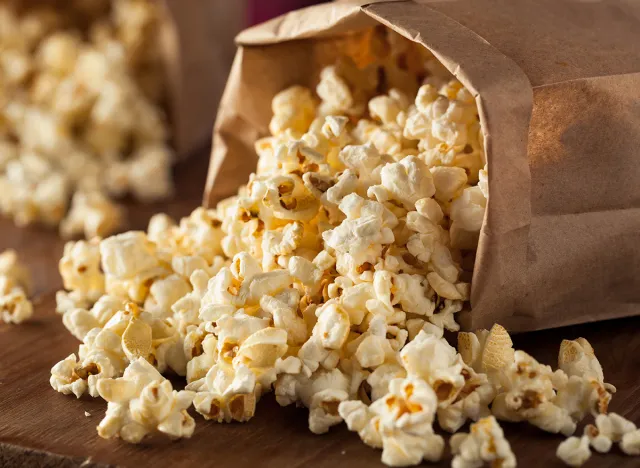
The last item on the list "might be the MVP," he says about popcorn. "Popcorn may be the definition of volume food because it goes from that small kernel to its puffy eating form. And as long as you're eating air-popped popcorn that doesn't have tons of butter or other ingredients, it's going to be low in calories," he says. Most people also forget that popcorn is a whole grain, so it's going to be full of good carbohydrates as well as fiber. And when it doesn't have a bunch of butter added to it, around 40 grams of popcorn kernels is going to make around seven to eight cups of popcorn, and that's only going to be around 120 calories total." And if you enjoyed this article, take advantage of these 15 Quick Ways to Lose Body Fat Percentage in a Week.




